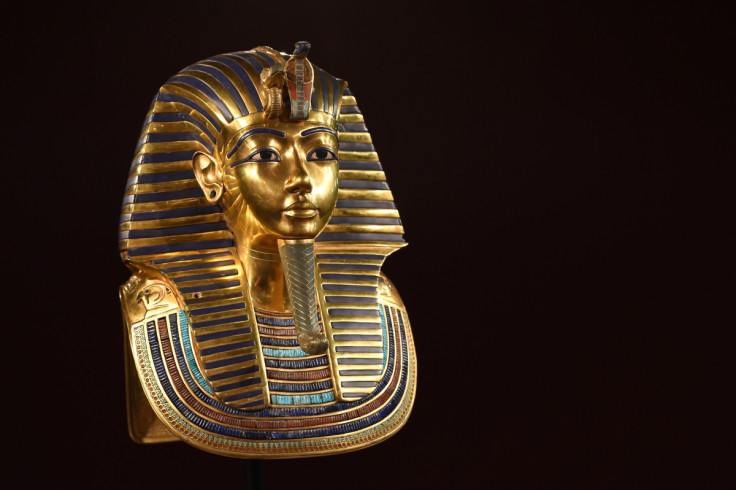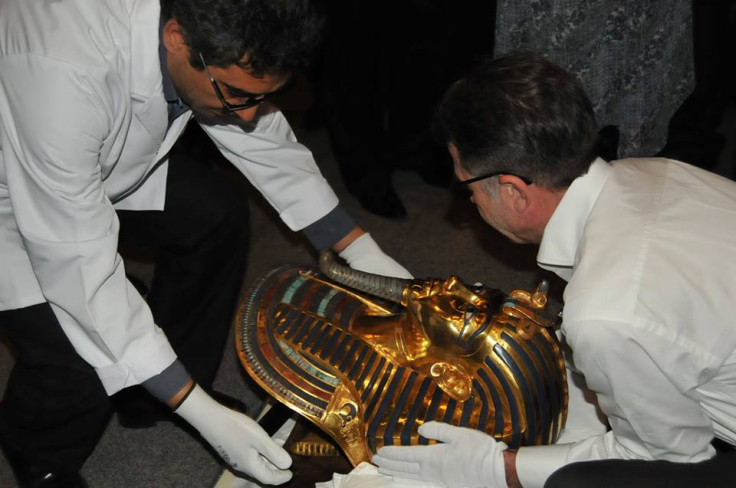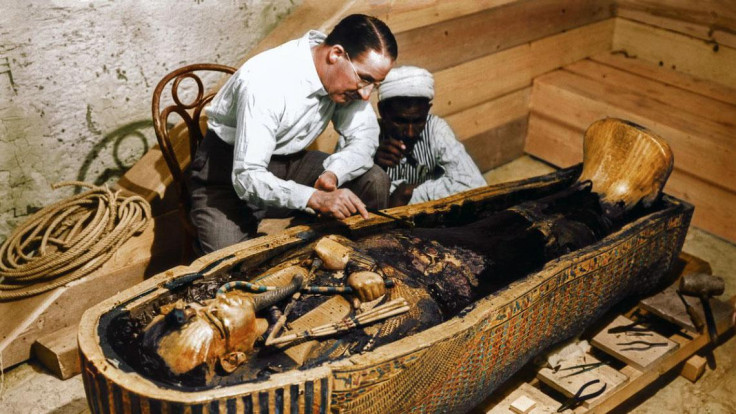Restoration of King Tutankhamun's beard reveals ancient Egyptian techniques used to create death mask

The restoration process of Tutankhamun's mask has finally uncovered the secret of how the mask was constructed – a gold tube found inside the pharaoh's beard was used to fix it in place while the artefact was being made. Scientists also discovered that the original material used to fix Tutankhamun's beard was beeswax.
"We found it was natural materials that the ancient Egyptians used. They are still the best tools: beeswax," Egyptian Antiquities Minister Mamdouh el-Damaty said at a press conference. "It was prepared well and the beard was attached very successfully."
The tools used to complete the job were also traditional, said Christian Eckmann, lead restoration specialist on the team. He reported that the removed the epoxy with spatulas and other wooden instruments.
"It is done," Eckmann said. "Ninety years after [Howard] Carter accomplished the first restoration of the mask in December 1925, we have the pleasure to present the mask in its original form."

The gold funerary mask of Tutankhamun is now back on public display at the Egyptian Museum in Cairo after clean-up and repair work to the beard was completed on 17 December. The golden mask has undergone a restoration process that took two months after workers broke the beard off while changing lights in the display case in August 2014.
After the beard was crudely stuck back on the mask, Eckmann, a conservator specialising in archaeological glass and metal objects at the Roman-Germanic Central Museum in Mainz (RGZM), was appointed by the Egyptian Minister of Antiquities, Mamdouh El-Damaty.
"Shit happens," Eckmann said. He went on to explain that that the accident that happened in the Cairo Museum could have happened anywhere. What lies at the heart of the problem is the botched attempt at repairing one of the world's most iconic Egyptian works of art. A first attempt at restoration involved using an insoluble epoxy resin to hold the beard in place.
"They did not attach it in its original position, the beard was slightly bent to the left side," Eckmann, said in an interview with DW.
"They also put some glue onto the chin and beard, so it was visible. It was not adequately done, and then in January 2015 the press found out, and the whole case was a scandal somehow," he continued.
Eckmann and his fellow conservator Katja Broschat's task was to undo the damage done. "The glue had to be removed mechanically," Broschat told Deutsche Presse-Agentur.
Delicate operation
The two scientists used a technique involving limewood rods to scrape away the resin between the beard and chin, meticulously preserving the precious gold. "I have to admit, it was a remarkable moment in my professional career when the mask first lay there in front of me," Eckmann said. "I would sleep better if this beautiful piece was back in its cabinet."
The false beard on the mask is a representation of the Pharaoh having the status of being a living god. It was in fact was already detached from the mask when Howard Carter found the artefact in 1922. After completing the excavations, the archaeologists brought the gold mask back to the museum and the beard was not reattached until 1946.

The restorers successfully removed the beard and Eckmann and his team researched the safest way to reattach it. "The basic idea behind all of the possible methods to reattach the beard is reversibility, this is the basic principle of restoration," he said. "Whenever you make an intervention, you try to do this in a way that is somehow reversible in the future if needed, and that is distinguishable from its original attachment or materials."
Salima Ikram, an archaeologist and professor of Egyptology at the American University of Cairo, said: "This is really a golden opportunity for us to further our knowledge not only about the mask of Tutankhamun, but about the 18th dynasty in Egypt, technology and trade links, and the expertise of gold and glass workers during this time period."
"The materials that have been used – whether they were imported or locally produced – the technologies available to the ancient Egyptians to come up with what they did, can all be understood," she added. "And of course, if the mask was changed or altered during the course of its history, this should be visible."
Eckmann and Broschat will carry out a detailed examination of the death mask. One of the theories they are hoping to prove is that the mask was originally made for a woman, possibly Queen Nefertiti, rather than Tutankhamun. They will also be the first people to discover more about the inside of the mask's beard and the materials it is made from.
© Copyright IBTimes 2025. All rights reserved.






















